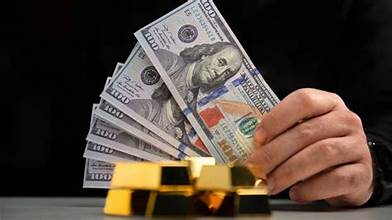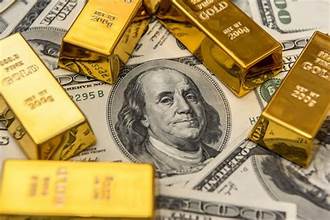Decades ago, it used to be a practice of the citizens of the United States to change paper currency notes into real forms of the precious metals like gold and silver. That excellent practice, sadly, ended several years ago.
The 1944 gathering of over 40 countries set a new international monetary system in the aftermath of World War II. The Bretton Woods system, as it was called, created a link that bound the U.S. dollar to gold at the fixed rate of $35 per ounce. According to an article by U.S Money Reserve on Bretton Woods, an exchange rate like this, fixed but adjustable to other nations, was tagged on the dollar.

But by the 1960s, however, the stock of foreign-held dollars came to exceed the U.S. government’s stock of gold — suggesting that the country might indeed not be in a position to permit currency holders to exchange paper money for gold at the official rate.
Coupled with other global gold market stress factors, the deficit deteriorated further, and central banks became increasingly reluctant to accept U.S. dollars.
Understanding the impact of Dollar strength on Gold prices.
Of course, few interactions within the more intricate dance of world economics are examined with so much scrutiny as that between the strength of the U.S. dollar and the price of gold. Investors, economists, and financial analysts use this dynamic correlation to form a sense of market sentiment and hence drive strategic investment decisions worldwide. In explaining this relationship, it remains incumbent upon an analysis of the considerations in play and their implications for the broad financial world at large.
The Base of the Relationship
The long, intertwined history of gold and the U.S. dollar has its roots in a system introduced at Bretton Woods and subsequent global monetary policies. In this system, which came immediately after World War II, the U.S. dollar was pegged at a fixed rate against gold at $35 per ounce. This, in essence, had the effect of implying that the value of the dollar was partially underpinned by the gold held in reserve within the United States, which helped provide stability for international trade and finance.
The Nixon Shock and the Era of Floating Exchange Rates
This changed dramatically in 1971 with the Nixon Shock, where President Richard Nixon announced the temporary suspension of dollar convertibility into gold, effectively dismantling the Bretton Woods system. It initiated the era of floating exchange rates wherein the values of currencies would now float based on market forces rather than fixed pegs to precious metals.
Dollar Strength and Its Impact on Gold Prices
Inverse Relationship Dynamics
The first of the major drivers of gold prices is the strength or weakness of the U.S. dollar. Ordinarily, an inverse relationship reigns in that should the dollar get strengthened against other major currencies; the gold price decreases, and vice versa. This inverse relationship stems from a few important factors:
1. Impact of the Gold Price by the Valuation of Currencies: If the dollar were to get stronger, it will make gold more expensive for those who hold other currencies, since that would cut global demand—price suppression. On the other hand, a weakened dollar will raise purchasing power in all other currencies vis-à-vis gold, raising global demand and probably price rates.
2. Safe-Haven Appeal: Gold becomes an instrument viewed as a haven during moments of economic uncertainty or geopolitical instability. It means that, in times when the dollar weakens on account of bad economic news, investors would overcrowd to gold as a store of value, thereby pushing up its price.
3. Interest Rates and Yield: A strong dollar is also linked with the interest rates of the US. Higher interest rates often make a strengthening dollar as capital from abroad looks for higher yields. This can inadvertently lower the demand for gold, as interest-bearing assets become more desirable over non-yielding gold.
Recent Trends and Observations
Impact of Recent Economic Policies
Recent economic policies and global events have highlighted the volatility and complexity of this very dollar-gold relationship:
-Quantitative Easing: Steps like quantitative easing the central banks undertake by buying assets and injecting liquidity within an economy may depreciate the dollar and strengthen gold prices amid growing inflationary concerns and fears of currency debasement.
– Global Trade Dynamics: The new dynamics of global trade and resultant geopolitical tensions that come to the fore are sure to impact currency markets and, naturally with it, SPDR gold shares. Global trade uncertainty will raise the stakes on gold, strongly as an insurance hedge against economic instability.
The Role of U.S. Money Reserve
U.S. Money Reserve, therefore, is one of those trusted names in the precious metals industry. It brings to the table an overview of how all of these intricate dynamics work. With its legacy of professionalism in gold and silver investing, U.S. Money Reserve literally knows the dollar’s fluctuations on precious metal prices, so as to aid investors in terms of how to navigate these volatile markets.
Conclusion:
The strength of the U.S. dollar is, therefore, an issue in a very complex and multifaceted relation with gold prices. However, the bearing of the same on global financial markets cannot be overpitched. The dynamics should keenly be watched by investors and all those stakeholders yearning to understand market trends for them to make informed decisions. U.S. Money Reserve shall, therefore, continue in its commitment to be at the forefront in offering clarity and guidance while navigating changes in the shifting landscape of precious metal investments against the backdrop of a fluctuating dollar. Want to know more about how the dollar’s strength relates to gold prices or discuss ways you can diversify into precious metals with a free consultation? Visit our website or speak with one of U.S. Money Reserve’s knowledgeable account executives today. This blog will be instrumental in providing an overall coherent overview of the reasons behind the dollar’s influence on gold prices, with the ultimate goal of empowering readers through an enriched understanding of the key interactions within world economies.

